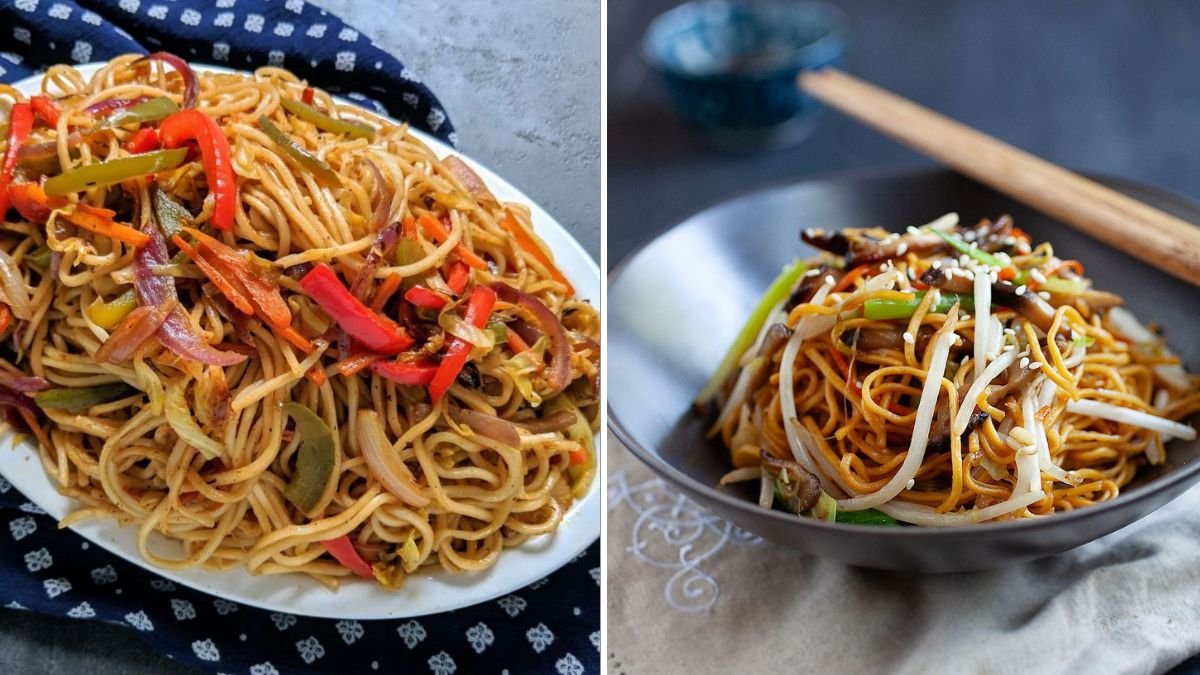Vegetable chow mein is a classic Asian-inspired dish that has won hearts in kitchens across America. With stir-fried noodles, crisp vegetables, and a savory sauce, it’s a quick, satisfying meal perfect for lunch, dinner, or even a weekend family gathering. Best of all, it’s completely customizable, vegetarian-friendly, and packed with nutrients.
In this guide, we’ll walk you through a 7-step process to make vegetable chow mein at home, using easily available ingredients and simple techniques to deliver restaurant-style flavor in your own kitchen.
Why Vegetable Chow Mein Is a Favorite in American Kitchens
- Quick and Easy: Ready in under 30 minutes, ideal for busy weeknights.
- Nutritious and Colorful: Loaded with fresh vegetables for vitamins, minerals, and fiber.
- Versatile: Can be served as a main dish, side, or even in lunchboxes.
- Customizable: Add tofu, tempeh, or chicken for extra protein.
- Flavorful: The combination of soy sauce, garlic, ginger, and sesame oil creates a delicious umami-rich experience.
Vegetable chow mein is both comforting and light, making it an American favorite for families and individuals alike.
Step 1: Gather Your Ingredients
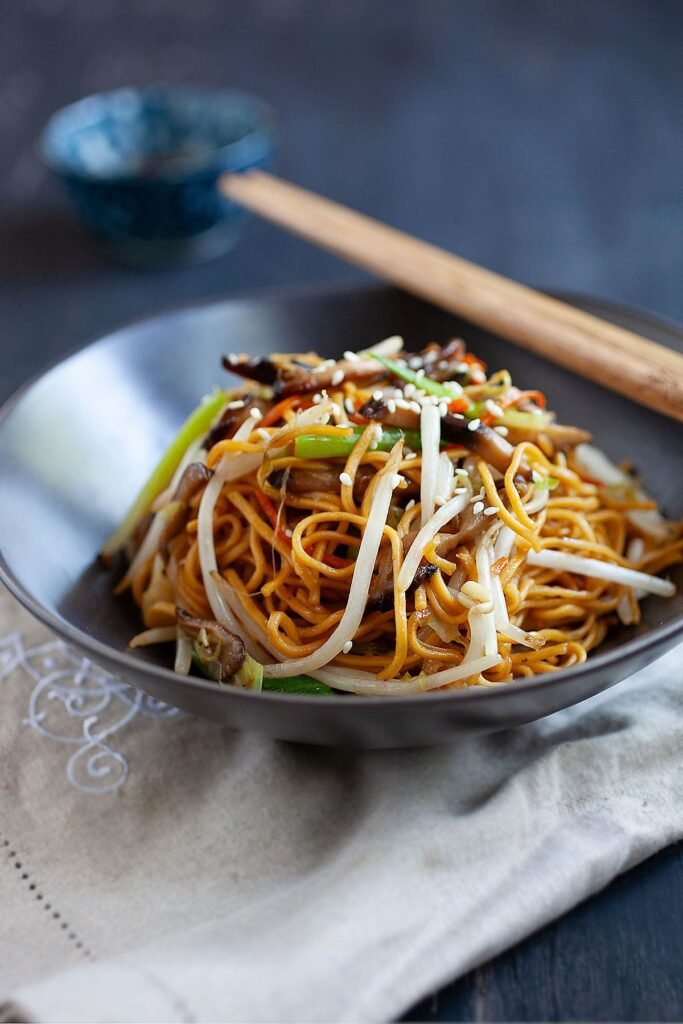
To make a perfect vegetable chow mein, you’ll need fresh vegetables, noodles, and a simple sauce. Most ingredients are available in American supermarkets or Asian grocery stores.
Vegetables:
- 1 cup carrots, julienned
- 1 cup bell peppers (red, yellow, or green), thinly sliced
- 1 cup cabbage, shredded
- ½ cup broccoli florets
- ½ cup snow peas or snap peas
- 2–3 green onions, chopped
- 2–3 garlic cloves, minced
- 1-inch piece ginger, minced
Noodles:
- 8 oz chow mein noodles, lo mein noodles, or spaghetti (for a convenient substitute)
Sauce Ingredients:
- 3 tablespoons soy sauce (low sodium preferred)
- 1 tablespoon oyster sauce (optional for non-vegetarians; use vegetarian version if desired)
- 1 teaspoon sesame oil
- 1 teaspoon rice vinegar
- ½ teaspoon sugar or honey
- ½ teaspoon black pepper
- Optional: ½ teaspoon chili flakes for heat
Cooking Essentials:
- 2 tablespoons vegetable oil or canola oil
- Salt to taste
Pro Tip: Prep all vegetables first to ensure quick stir-frying and prevent overcooking.
Step 2: Cook the Noodles
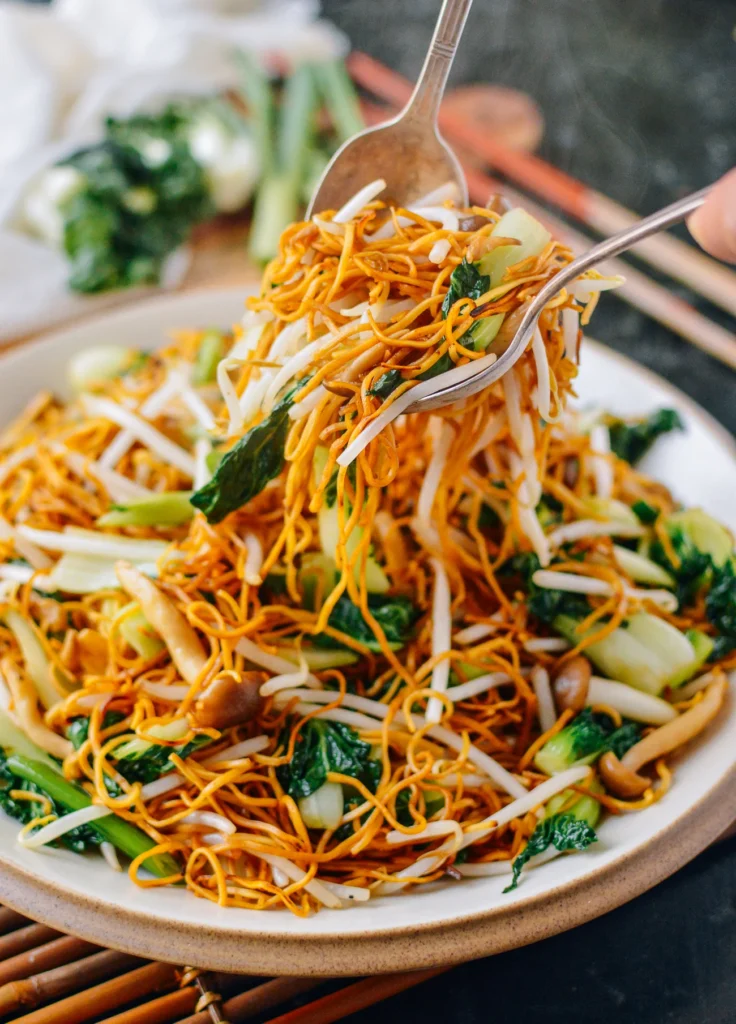
Properly cooked noodles are the foundation of a great chow mein:
- Boil a pot of water with a pinch of salt.
- Add noodles and cook according to package instructions, usually 3–5 minutes.
- Drain noodles and rinse under cold water to stop cooking and prevent sticking.
- Toss with a few drops of sesame oil to enhance flavor and keep them separate.
Pro Tip: For authentic texture, slightly undercook the noodles—they will finish cooking in the stir-fry.
Step 3: Prepare the Sauce
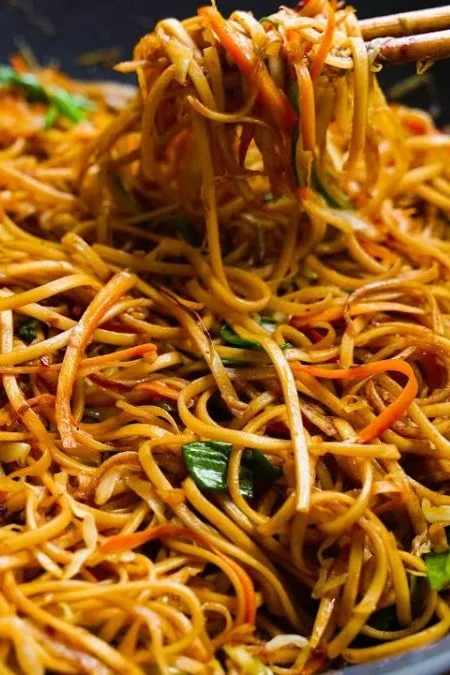
A simple, balanced sauce gives chow mein its signature flavor:
- In a small bowl, combine soy sauce, oyster sauce, sesame oil, rice vinegar, sugar, black pepper, and chili flakes if using.
- Mix well until sugar dissolves and set aside.
Pro Tip: Adjust seasoning to taste—add a bit more soy sauce for saltiness or a dash of honey for sweetness.
Step 4: Stir-Fry the Vegetables
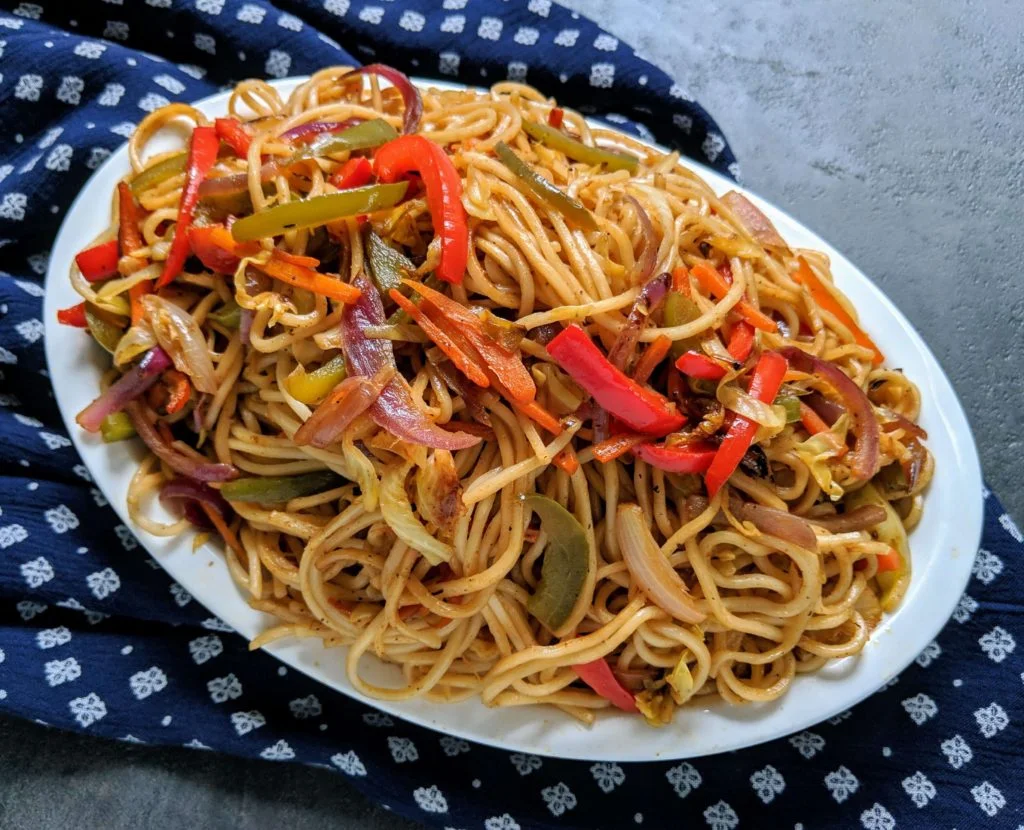
Vegetables need to be cooked quickly to maintain crunch and color:
- Heat 2 tablespoons of vegetable oil in a large wok or skillet over medium-high heat.
- Add minced garlic and ginger, sautéing for 30 seconds until fragrant.
- Add harder vegetables first—carrots, broccoli, and bell peppers. Stir-fry for 2–3 minutes.
- Add softer vegetables—cabbage, snow peas, and green onions—stir-fry for another 1–2 minutes.
Pro Tip: Keep the heat high and stir constantly to ensure even cooking and maintain crispiness.
Step 5: Combine Noodles and Vegetables
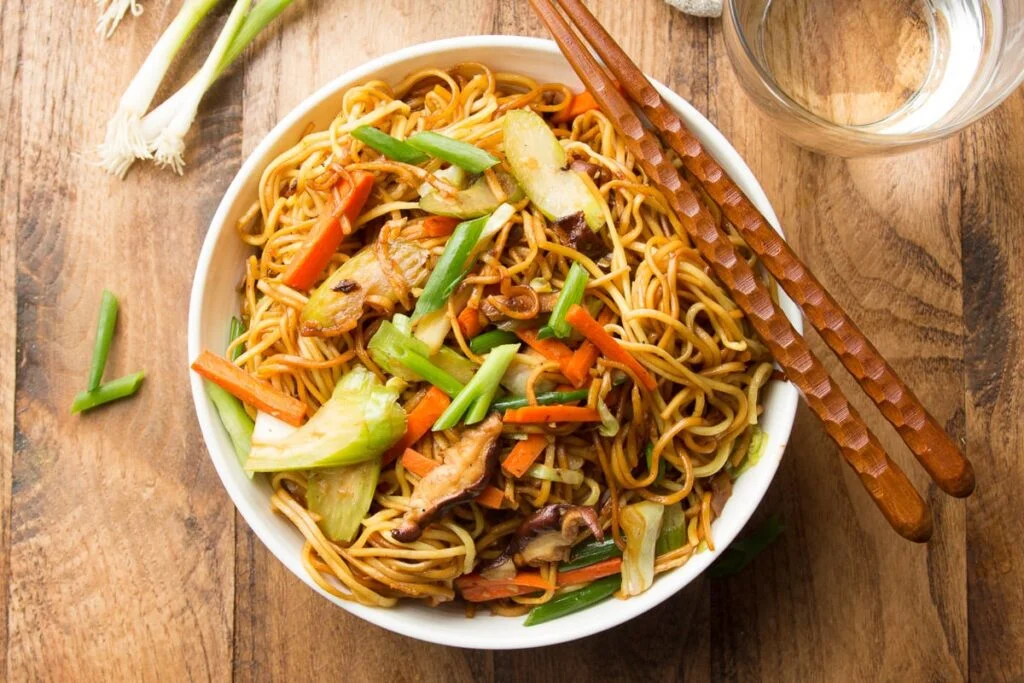
Once vegetables are partially cooked, it’s time to bring the dish together:
- Add the cooked noodles to the wok with vegetables.
- Pour the prepared sauce over the noodles and toss well to coat evenly.
- Stir-fry for 2–3 minutes until everything is heated through and noodles absorb the flavors.
Pro Tip: Use tongs or chopsticks to gently toss noodles without breaking them.
Step 6: Taste and Adjust Seasoning
Flavor balance is key to an authentic chow mein:
- Taste a small portion and adjust salt, pepper, or soy sauce as needed.
- Add a few more drops of sesame oil for aromatic richness.
- If you like heat, sprinkle a pinch more chili flakes.
Pro Tip: Avoid adding too much soy sauce at once—better to add gradually to prevent oversalting.
Step 7: Serve and Garnish
Presentation enhances the appeal of vegetable chow mein:
- Serve hot in bowls or on plates.
- Garnish with chopped green onions, toasted sesame seeds, or fresh cilantro.
- Optional: Serve with lime wedges or a side of pickled vegetables for added flavor.
Pro Tip: Pair with spring rolls, dumplings, or miso soup for a full Asian-inspired meal at home.
Tips for Making the Best Vegetable Chow Mein at Home
- Prep Ahead: Slice all vegetables before cooking—stir-frying is fast!
- High Heat Cooking: Use medium-high to high heat for crisp vegetables and slightly caramelized noodles.
- Avoid Overcrowding: Cook in batches if needed to prevent steaming instead of stir-frying.
- Noodle Alternatives: Rice noodles or even spaghetti can substitute if chow mein noodles are unavailable.
- Protein Boost: Add tofu, tempeh, shrimp, or chicken for a more filling dish.
- Flavor Enhancements: Add hoisin sauce, chili garlic sauce, or a splash of soy sauce for variety.
Health Benefits of Vegetable Chow Mein
- Packed with Nutrients: Fresh vegetables provide vitamins A, C, K, and minerals like potassium and magnesium.
- High Fiber: Vegetables and whole-grain noodles improve digestion and satiety.
- Low-Calorie Option: Light on oil and naturally low in fat if prepared carefully.
- Customizable for Diets: Can be vegetarian, vegan, or gluten-free depending on noodle and sauce choices.
This makes vegetable chow mein a nutritious, flavorful, and versatile option for American households seeking healthy, home-cooked meals.
Final Thoughts
Making vegetable chow mein at home is both easy and rewarding. With seven simple steps—gathering ingredients, cooking noodles, preparing sauce, stir-frying vegetables, combining everything, tasting, and serving—you can enjoy a restaurant-style dish in your own kitchen.
Whether you’re a busy professional, a student, or cooking for family, this dish is quick, customizable, and packed with flavor and nutrition. With a few fresh vegetables, the right sauce, and high-heat stir-frying, you can create a colorful, crunchy, and delicious vegetable chow mein that rivals your favorite takeout.
Enjoy this wholesome meal on its own or pair it with other Asian-inspired sides for a full culinary experience at home!
